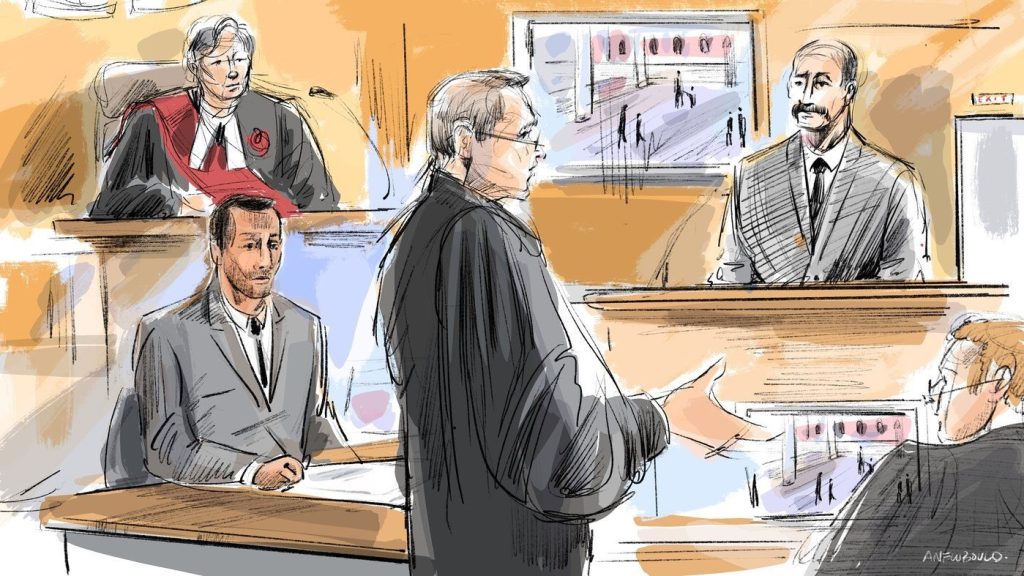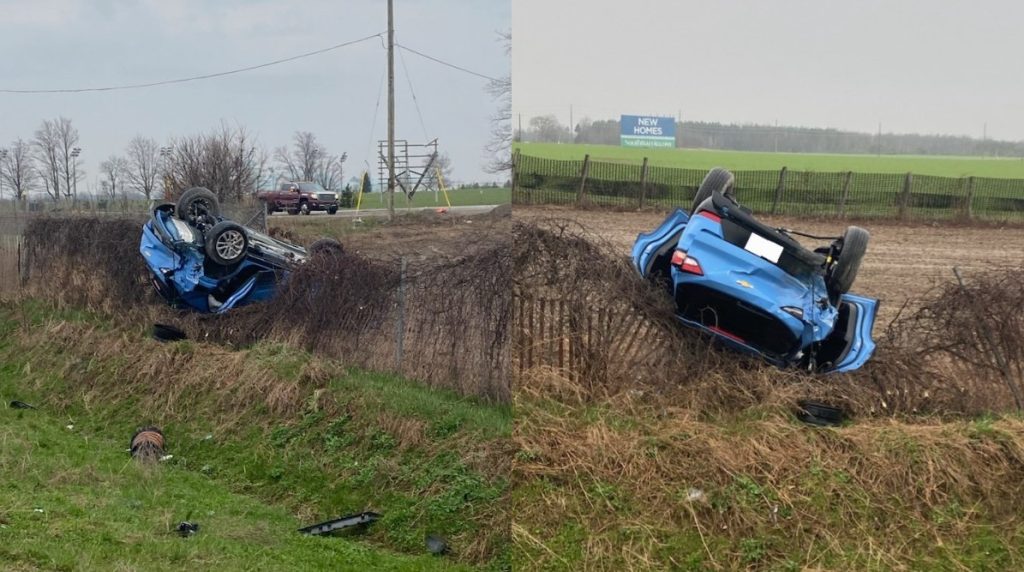Oil and gas flow to Texas coast spawns building, tensions
Posted November 29, 2018 6:10 pm.
This article is more than 5 years old.
PORT ARANSAS, Texas — To the east, the Gulf of Mexico stretches out, blue-green and sparkling. To the west and north, flounder and trout meander in a chain of bays. People flock here to fish. Others come to this beach town near Corpus Christi to kayak, parasail or admire the hundreds of bird species on the barrier island, which is deep into rebuilding efforts after Hurricane Harvey damaged or destroyed 85 per cent of the buildings here last year.
A perfect location, from a certain point of view, to put not one but two crude-oil export terminals for ships so big they’re called supertankers.
Those proposals are part of a historic buildout of oil and gas infrastructure in the United States as it becomes a top exporter of both fuels. Texas, home to the most prolific oilfield in the country, is at the epicenter. More than 80 plants, terminals and other projects are in the works or planned up and down the state’s Gulf Coast, from Port Arthur to Brownsville, according to a Center for Public Integrity and Texas Tribune review of corporate plans. Companies have been laying enough pipeline in Texas in the last several years to stretch from the Atlantic to the Pacific three times over, more than 8,000 miles in all.
Oil and gas production in the U.S. has skyrocketed, particularly in the Permian Basin, most of which underlies West Texas. Producers there are employing new drilling technologies to meet — some would say prolong — the global demand for fossil fuels. When Congress lifted decades-old federal restrictions on crude exports at the end of 2015, a move that came on the heels of rule changes throwing open the doors for exports of natural gas, it set off a mad dash.
___
This story is part of a collaboration between the Center for Public Integrity, The Texas Tribune, The Associated Press and Newsy.
___
Much of the export infrastructure is headed for just two regions: Houston — America’s oil capital — and Corpus Christi, where a port previously focused on oil imports is battling it out with Houston to be the country’s No. 1 location for moving crude to other nations. Each shipped out more than $7 billion in crude during the first nine months of the year, up from less than $1 billion two years earlier, according to U.S. Census Bureau figures. Terminals once used to bring oil in are pushing it the other direction.
“At the end of 2015 … we had the first shipment of crude that was exported,” said John LaRue, executive director of the Port of Corpus Christi. “And now, as I’m sure you know, it’s a constant surge.”
Oil and gas export growth means jobs paying good wages. In Corpus Christi, it’s responsible for roughly 800 new positions so far with another 1,600 expected in the next four years, plus several thousand temporary jobs constructing all those facilities, according to an analysis by Texas A&M University-Corpus Christi’s Jim Lee.
But it also intensifies a tragic quandary bedeviling the Gulf. Heavy industry there pumps out greenhouse gases warming the climate, upping the risks of powerful storms that, in turn, endanger those same facilities and everything around them. Harvey, which dumped more rain than any other U.S. storm on record, damaged hundreds of thousands of homes in Texas last year, killed at least 68 people and, particularly around Houston, sparked industrial spills, air pollution and explosions.
Many of the proposed, under-construction or recently built facilities along the Texas Gulf are in areas that felt Harvey’s bite. A Corpus Christi liquefied natural gas terminal — which just began operations and already has expansions planned — received permits to release up to 5.8 million tons of greenhouse gases each year, according to an analysis by the Environmental Integrity Project, a research and advocacy group. That’s the equivalent of nearly 1 1/2 coal-fired power plants. Other parts of this new supply chain, which extends into the Louisiana side of the Gulf, will facilitate greenhouse gases pumped out in Asia, Europe and beyond.
“There is some irony or poetic justice, depending on your point of view, in having all these greenhouse-gas emitters being the most vulnerable to climate change, but there are a lot of people living around them, and it’s not such a good deal for them,” said Eric Schaeffer, executive director of the Environmental Integrity Project and a former head of civil enforcement at the U.S. Environmental Protection Agency.
The boom also sets up a clash over the future of the mid-Gulf, a less industrial and more tourism-focused part of the Texas coast than Houston.
From the Port of Corpus Christi’s perspective, the new export business is a huge plus. “You’re going to see more development, more industry, more jobs,” said Eddie Martinez, the port’s business development representative, as he cruised in a boat along the ship channel in June, passing oil tankers and new projects.
But as the growth spills beyond the port’s industrial spine, it’s upending some communities.
The idea of building crude-oil terminals in Port Aransas to serve ships extending the length of four football fields — requiring a much deeper ship channel in that area — has residents and business owners there up in arms.
“Everyone I speak to says they’re against this,” said Neesy Tompkins, who moved to town in 1978 after falling in love with its natural beauty.
This type of development boom on the coast isn’t unprecedented, but it hasn’t happened for decades, said Michael Webber, acting director of the Energy Institute at the University of Texas at Austin. World War II kicked off a building spree that extended into the 1950s, he said. This time around, soaring production is the trigger.
“We’re seeing massive buildout,” Webber said. “Export infrastructure, chemical infrastructure, you name it.”
THE TOWN THAT FISH BUILT
Port Aransas, a city of about 4,000 full-time residents, runs on tourism. Fishing is a big part of that — it’s no accident the community spent a little over a decade around the turn of the last century named for a fish, the enormous tarpon. This is a place that calls itself the fishing capital of Texas, a spot where President Franklin D. Roosevelt once came to try his luck. Faced with hurricane-wrecked government facilities from the police station to the library, the city council decided to fix the marina first — to get boaters and their dollars back to town.
“That’s the lifeblood of Port Aransas,” said Councilwoman Joan Holt. “Next to the beach, but the beach was in perfect shape.”
More than a century ago the U.S. Army Corps of Engineers dredged a deepwater port at Harbor Island, partly within city limits. The Humble Oil and Refining Co. built an oil terminal there. But shippers preferred the Corpus Christi port, opened in 1926. These days, big ships pass through the waters alongside Port Aransas to get to Corpus Christi, farther inland. Offshore oil rigs are stored on Harbor Island, but the terminal and its leaking oil tanks are long gone.
For years, though, officials with the Port of Corpus Christi — now the owner of a substantial piece of Harbor Island — have seen development potential there.
They’ve filed for a permit to build a desalination plant on the island to ensure their burgeoning clientele has enough water amid droughts that climate change is poised to worsen. This is also where they want to put a crude oil export terminal with at least two loading docks. In October they said The Carlyle Group, a private-equity firm, plans to develop the project and have it running by late 2020. The infrastructure firm Magellan Midstream Partners said it is considering building another supertanker crude-oil terminal on the island.
Opponents have focused their ire on the port, a government entity. “What they’re proposing is an environmental disaster,” said John Donovan, who lives part-time in town and helped form a new group, the Port Aransas Conservancy, that is pressing back on the oil-terminal plans.
In a written statement, the port said, “We are firmly committed to BOTH our economic development mandate, and our environmental stewardship mandate.” When it announced its partnership with Carlyle in October, the port said Corpus Christi “would benefit from the thousands of direct and indirect jobs as well as billions in incremental economic activity.”
The port already has the go-ahead to deepen its ship channel from 47 to 54 feet. Now, for the Harbor Island project, it’s considering depths of at least 75 feet in that area. Among dredged U.S. channels, only the Port of Long Beach in California would top that, according to the U.S. Army Corps of Engineers, and it requires dredging infrequently because it is naturally deep.
This is the part of the Harbor Island project that most worries Holt, a fish biologist who became a councilwoman after retiring from the University of Texas at Austin’s Marine Science Institute in Port Aransas. The local catch is plentiful because the larval fish spawned offshore get swept into seagrasses in the shallow water alongside the city, where they’re protected from predators. With a much deeper channel, it seems to her, comes a risk they could get stuck there and die.
Channel deepening can cause more seawater to end up in bays, which can harm the plants and animals there, said Stefan Talke, an associate professor of civil and environmental engineering at Portland State University in Oregon. And in some port communities, deeper channels have amplified tides and worsened storm surge, increasing the flooding from hurricanes. He recommends careful study.
“If we’re going to make decisions, like invest all this money to deepen, we should have a clear-eyed view of what the trade-offs are,” he said.
The Port of Corpus Christi, in its written statement, said it is “partnering with multiple academic and research institutions to ensure the highest levels of science are applied at every step of the process.”
Members of the fledgling Port Aransas Conservancy, for their part, think handling crude offshore would be the less-risky option. Several such projects are proposed off the coast of Texas. One is nearby here, south of Corpus Christi — and the port is aggressively opposing it. Port officials claim that project, not their own, could be the environmental disaster. They hired a lobbying firm as part of their push to get state leaders to block construction.
Sandy Fielden, director of oil and products research for Morningstar, an investment research firm, noted that the offshore project represents competition that could cost the port millions of dollars in lost revenue.
In June, when the plan for Harbor Island was still one crude-oil terminal rather than two, Tammy and James King went out in their fishing boat on a beautiful morning. The Kings, who live part time in Port Aransas, tooled past other boats, a parasailer, brown pelicans in search of a meal and the Lydia Ann Lighthouse, a local landmark overlooking marshland and tiny lakes where kayakers roam.
The Kings paused where three channels meet: the Lydia Ann, where baby fish hide in seagrasses; the Aransas, which leads to two bays with water sometimes called as clear as gin, full of trout, redfish and other marine life; and the Corpus Christi ship channel. Twenty miles to the north is the Aransas National Wildlife Refuge, where whooping cranes were brought back from the brink of extinction — about 500 were there last winter, compared with just 15 in 1941 — and where scientists and visitors see hundreds of other species, from the reddish egret to the spotted chorus frog.
The Kings, who work in real estate, aren’t against growth or oil and gas. But they don’t understand the zeal to develop Port Aransas.
“There’s a great port in Corpus Christi with all the industrial infrastructure,” James King said over the thrum of his engine. “Why build industrial infrastructure here?”
‘I DON’T WANT TO HAVE TO WORRY’
All but one of the top 10 ports for crude shipped abroad are on the Gulf Coast, most in Texas. Natural gas exports are also set to escalate here, along with related products, such as plastics made from components of natural gas.
North of Corpus Christi, ExxonMobil and SABIC are planning one of the world’s largest ethane crackers, a petrochemical plant that will process a natural gas liquid and transform it into plastic. ExxonMobil said it will do so in a manner that “protects the environment, as well as the health and safety of our employees and neighbours.”
The mayor of Gregory, the tiny city nearby, is all for it. In Portland, also close to the site, residents organized to try to stop it.
Gregory is a city at the intersection of three highways, with a railroad bisecting it, everything passing by en route to somewhere else. Jessica Ortiz, who lives here, and her daughter, Jenna Adams, who was raised here, drove around in June, naming the few businesses left in town and the ones shuttered by Harvey as they explained why they’re excited about the plant. Maybe Gregory would get more restaurants, more jobs, more residents. Maybe their family would benefit, too.
Adair Apple, who started a Portland citizens group opposing the development, also saw the plant through the lens of what it would mean for the area — pollution. Faced with the likelihood that Exxon would get all the permits it applied for, her family moved out.
“I don’t want to have to worry about my daughters’ health,” said Apple, who now lives on the south side of Corpus Christi, away from industrial development.
Storm protections, meanwhile, won’t be coming nearly as quickly as the new infrastructure. Coastal levies and other projects the state and U.S. Army Corps of Engineers have recommended, most focused around Houston, are years away.
Steve Everley, spokesman for Texans for Natural Gas, an industry-funded advocacy group, isn’t worried. The oil and gas sector has invested heavily in storm preparedness and proved it can weather big hurricanes, he wrote in an email.
“Within weeks after Harvey’s landfall, 20 of the 24 refineries that shut down had restarted, and 70% of petrochemical production was back online,” he wrote.
But so many instances of air and water contamination occurred in the hurricane’s wake that Gov. Greg Abbott suspended some pollution rules in storm-affected counties — and didn’t reinstate them for seven months. Bob Stokes, president of the Galveston Bay Foundation, a conservation group, thinks Harvey showed that the petrochemical industry — smaller facilities in particular — isn’t prepared and that no one is requiring them to do better.
“Somebody should be forcing that issue,” he said, “and unfortunately I’m at a loss for how to do it.”
___
Jamie Smith Hopkins is a reporter for the Center for Public Integrity, a non-profit investigative news organization in Washington, D.C. Kiah Collier is a reporter for The Texas Tribune, a non-profit news organization in Austin, Texas. Center for Public Integrity reporter Rachel Leven contributed to this story.
Jamie Smith Hopkins Of The Center For Public Integrity And Kiah Collier For The Texas Tribune, The Associated Press










